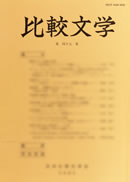Volume 29
Displaying 1-17 of 17 articles from this issue
- |<
- <
- 1
- >
- >|
ARTICLES
-
1987Volume 29 Pages 7-21
Published: March 31, 1987
Released on J-STAGE: June 17, 2017
Download PDF (1687K) -
1987Volume 29 Pages 23-36
Published: March 31, 1987
Released on J-STAGE: June 17, 2017
Download PDF (1618K) -
1987Volume 29 Pages 37-55
Published: March 31, 1987
Released on J-STAGE: June 17, 2017
Download PDF (2211K) -
1987Volume 29 Pages 57-68
Published: March 31, 1987
Released on J-STAGE: June 17, 2017
Download PDF (1316K) -
1987Volume 29 Pages 69-80
Published: March 31, 1987
Released on J-STAGE: June 17, 2017
Download PDF (1291K) -
1987Volume 29 Pages 81-92
Published: March 31, 1987
Released on J-STAGE: June 17, 2017
Download PDF (3098K) -
1987Volume 29 Pages 93-105
Published: March 31, 1987
Released on J-STAGE: June 17, 2017
Download PDF (1529K) -
1987Volume 29 Pages 107-119
Published: March 31, 1987
Released on J-STAGE: June 17, 2017
Download PDF (1587K) -
1987Volume 29 Pages 121-140
Published: March 31, 1987
Released on J-STAGE: June 17, 2017
Download PDF (2453K)
BOOK REVIEWS
-
1988Volume 29 Pages 141-147
Published: March 31, 1988
Released on J-STAGE: July 31, 2017
Download PDF (2048K) -
1987Volume 29 Pages 147-150
Published: March 31, 1987
Released on J-STAGE: July 31, 2017
Download PDF (1102K) -
1987Volume 29 Pages 150-153
Published: March 31, 1987
Released on J-STAGE: July 31, 2017
Download PDF (1207K) -
1987Volume 29 Pages 153-160
Published: March 31, 1987
Released on J-STAGE: July 31, 2017
Download PDF (2574K) -
1987Volume 29 Pages 160-163
Published: March 31, 1987
Released on J-STAGE: July 31, 2017
Download PDF (1212K) -
1987Volume 29 Pages 163-166
Published: March 31, 1987
Released on J-STAGE: July 31, 2017
Download PDF (1176K) -
1987Volume 29 Pages 166-169
Published: March 31, 1987
Released on J-STAGE: July 31, 2017
Download PDF (1259K)
-
1987Volume 29 Pages 192-179
Published: March 31, 1987
Released on J-STAGE: July 31, 2017
Download PDF (2228K)
- |<
- <
- 1
- >
- >|
